Choosing a cut in the beef section of the local butcher or selecting one from a steakhouse menu can be confusing. Beef is divided into a variety of cuts, and each cut is best cooked in a specific . Beef is first cut into sections called primal cuts. The primal cuts are then divided into sections appropriate for cooking and serving. By knowing the cuts and characteristics of each section of beef, anyone can make an educated decision when it comes time to choose a cut of steak.
Chuck
The chuck portion of the cow is mostly muscle. This heavily exercised section is full of collagen and other connective tissues. When chuck is cooked, the collagen melts and makes the beef very flavorful. Cuts from the chuck portion include the chuck steak and the blade roast. Both of these cuts are best cooked using slow methods like braising or stewing.
Short Loin
The short loin area of the cow is used for tender cuts with mild flavor. This is the portion from which tenderloin steaks, T-bone steaks and porterhouse steaks are cut. The tenderloin is possibly the most popular cut of steak. It has gained its popularity because of its tenderness and mild flavor that pairs well with sauces. The tenderloin can be served whole or cut into smaller steaks referred to as filet mignon. The T-bone steak is a bone in steak that consists of a strip steak on one side of the T-bone and a small piece of tenderloin on the other. The T-bone is from the center section of the short loin. The porterhouse steak is also popular cut of steak because it includes a cut of strip steak and a piece of the tenderloin. The porterhouse steak is cut from the back of the short loin. Short loin steaks are best grilled, broiled or sautéed.
Round
Very lean cuts of beef come from the round section. Top round and rump roast are the most common cuts from this section. Because of the very low fat content, it is best to cook these cuts slowly and with added moisture to prevent the beef from becoming dry.
Rib
Steaks cut from the rib section are some of the most flavorful cuts of beef. However, meat from the rib section is not very tender. Rib steaks and rib roasts are both cut from this section. Both can be found cut with or without the bone. Rib steaks and rib roasts can be grilled, broiled, sautéed or roasted.
Shank/Brisket
The brisket cut is an inexpensive cut of beef that is taken from the breast section of the cow. Grilled, brisket is very tough. To achieve maximum tenderness and a full flavor, the brisket should be slow cooked with extra liquid. Corned beef is usually made from this cut of steak.
Sirloin
The sirloin cuts of beef provide full flavor without the tenderness of the short loin cuts. Sirloin is often sold as top sirloin and bottom sirloin. The top sirloin cut is more tender than the bottom sirloin cut. Because sirloin is not as tender as short loin cuts, it is generally cheaper as well.
Flank
Meat from the flank section is very flavorful, and a very lean cut. The most popular cut from the flank section is the flank steak. The flank steak is best served seasoned or marinaded and grilled. Flank steak should be sliced against the grain when served.
Related Articles
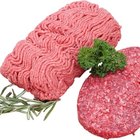
What Cuts of Meat Are Used for Ground ...
Difference Between Ribeye Steak & ...
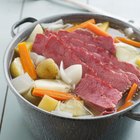
How to Slow Cook a Joint of Beef
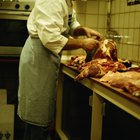
Cuts of Meat From a Front Quarter of ...

What Is a Chateau Cut?
What Cuts of Beef Come From a Hind?

Does a Rib Eye Have a Filet in It?

How to Convection Roast a Brisket
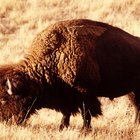
The Best Way to Prepare Bison Sirloin

What Is Rump Steak?

How to Cook Angus Beef in the Oven

What Is Sirloin Roast?
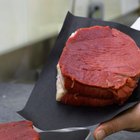
How to Slice Round Steak for Jerky

How to Make a Blackbuck Antelope Roast
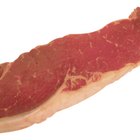
The Difference Between a Sirloin Roast ...

What Is the Difference in Top Sirloin & ...

Filet vs. Strip vs. Sirloin

Do Filet Mignon Steaks Come From Female ...
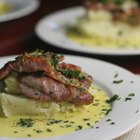
How to Cook Veal Leg Scallopini

How to Cook Kobe Steaks
Writer Bio
Based in New Orleans, Bethany Culp has been a freelance writer since 2004. She enjoys researching and writing about a variety of topics, including travel and outdoor adventure. Her work has been published on numerous websites including USAToday.com. Culp holds a Bachelor of Arts in communications from Loyola University New Orleans.